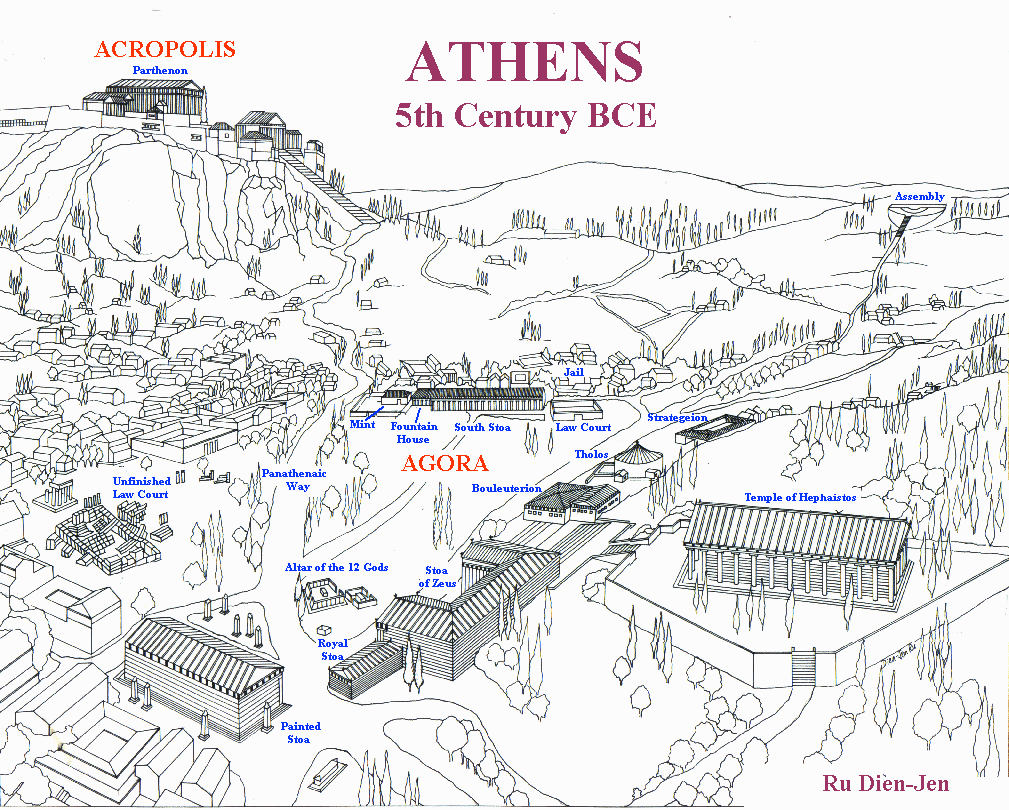Lesson 12
Ancient Greece

Case Study:
"Meeting in the Agora"
Commercial Centre:
People were able to buy most of their goods. Women were not allowed to go into a public place such as the Agora so they would have sent their slaves to do the shopping. Items shoppers could have purchased were: lamps hire cooking vessels fish olive oil garlic onions Services available were: Barbers cobblers banks Even in a section of the Agora, slaves and horses were displayed for sale.
Administrative/legal centre
On every day except holidays the elected council of 500 met in a building called the Bouletron on the western side of the Agora to look after the day-to-day administration. On the south of the Agora the law courts were located. Every citizen had the right to be on the jury. Each juror was paid about one thirds of a skilled labours wage for jury duty, this enabled even the poorest citizens the chance to be on the jury.
Orchestra
The Orchestra was the central part of The Agora, here actors performed comedies so that the lay could understand. This place was later turned into the theatre of Dionysus.
Philosophy
Many men went to the Agora to discuss ideas of philosophy. One of the most famous philosophers was Socrates. Socrates committed his life to making people think about why they held particular beliefs. He did this by constantly questioning them in order to draw out the implications of their beliefs. Due to Socrates constantly questioning people, many individuals distrusted him and was eventuality tried on all the charges of “corruption of the young” and “neglect of the gods whom the city worships and the practice of religious novelties.” Socrates was found guilty and sent to death by drinking hemlock.



